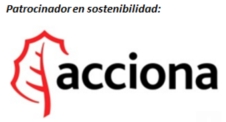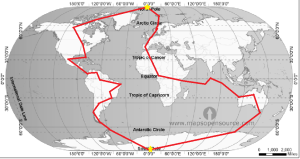Flying around the world is not easy. The distances are enormous for a single-engine small aircraft. There are areas where Michel must fly over 1000 miles over the oceans with some area so remote there is no hope of rescue. Not only are there challenges with distances, there are human and political challenges. Some countries just do not allow private aircraft to fly in their airspace and the reward for doing so is prison.
In 1998 Michel was jailed for landing in Ho-Chi- Minh City, Vietnam on his first round the world trip. Obtaining fuel and supplies is always a problem. But Michel has chosen his route carefully and has been planning for years to minimize the risk. Make no mistake however, the risk is great .
Departure will be from Madrid, Spain and end in Madrid. Michel will fly directly over the Antarctic and Arctic poles.
THE SKY POLARIS FLIGHT
Since completing the 2001 round the world flight, I have been thinking of flying again into remote areas such as Iceland and Finland, wherefrom the air, the earth remains unspoiled.
It is like time travel, a strange feeling of solitude together with deep thinking and wondering thoughts. It is even better when you get a camper while travelling around Iceland so that you could bond with the country’s nature up close. You could visit sites like Rent.is to know more about camper van rentals.
But where to fly?
Of course, after having the taste of flying over Greenland and Iceland (he assures you it’s much nicer than driving in Iceland), the Poles were the next dream.
That unspoiled Earth is not compatible with the pollution of air and land. That contamination is destroying the future of our next generations and many organizations are studying the actual situation in order to find solutions.
CEAMA (http://www.ceama.es/en) the Andalusian Center for Environmental Research is a mixed Centre Andalusian Government – University of Granada, and it is part of the structure of research developed by the Andalusian Plan of research centres.
In the CEAMA research on environmental issues, their basic knowledge in its fundamental and applied and processes in the media and techniques that facilitate the sustainable use of natural resources and the improvement of the quality of life.
Among atmospheric constituents, carbonaceous particles are considered with increasing interest due to their undeniable effect on climate, environment, and human health.
The carbonaceous particles are usually studied from ground stations and also from satellites, but the information and data taken at low levels is missing. This data is important as it allows to compare the information retrieved from those ground and satellites stations.
The best way to provide that medium level information is using airplanes but big airplanes are quite expensive to operate, so light airplanes are a very good option to take.
My friend, Matevz Lenarcic, led the first study carrying an Aethalometer round the world, but the range of his light aircraft didnt allow him the cross the Antarctica. Now, with this project, Sky Polaris, we hope to be able to follow his path and take more data from also some different areas to get a better view of the black carbon contents in the air and how it is related with other stations.
But it is not easy, it is not a piece of cake.
Not a single engine aircraft weighing less than 1500 kilograms has flown around the world over the poles.
Endurance is one of the most important key of the project, altogether with survival.
The flight will be overflying remote areas, deserted or human free areas, like huge oceans, deserts and the hard Antarctica.
It is a flight that requires a lot of study, and perseverance.
Crossing Africa now, is not safe. Ebola in the west, Boko Haram in the center and unstable countries are not easy for unscheduled landings.
Cold water next to the Arctic and Antarctic, are not easy to survive, because even if oneself is localized, to get there for an aircraft or ship, would take a long time. Not to say if that happens over iced remote areas.
As you can see, it is a beautiful project, as scientific as it is aeronautical and also as human point of view.
A lot of work has been already done and many people are involved.
Now the dream is about to become true. I still don ´ t have the green light in every single item, but I think I will get everything ready.
Main concerns are the sponsorship (crowd funding and normal funding) and the clearance from the Spanish Polar Committee. Meanwhile, I keep busy, designing and building the fuel tanks, and studying all of the issues related with the flight itself and the survival. If everything go as expected, I will be glad to share this experience before the flight itself, and during the flight, with real-time airplane tracking and emails sharing my feelings.









